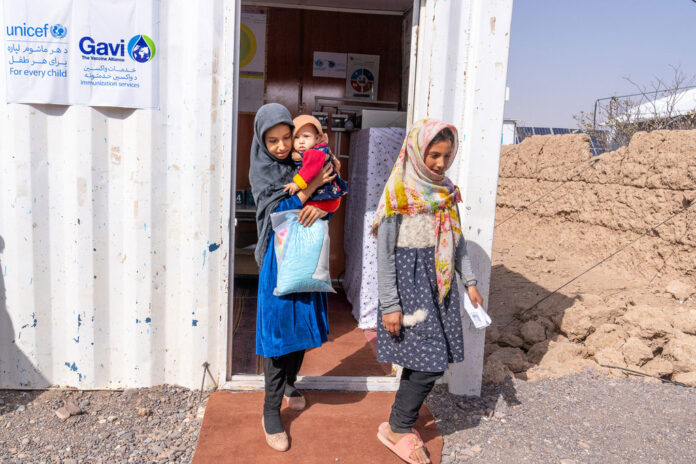
Four years after the dramatic withdrawal of U.S. forces from Afghanistan, the country remains at the centre of geopolitical debate and strategic maneuvering. The chaotic scenes that marked America’s exit are still fresh in global memory, but the United States’ strategic calculus on Afghanistan has not been entirely abandoned. Former President Donald Trump has publicly reignited discussion over Afghanistan by demanding that the country “return” Bagram Airfield to the United States, describing it as a necessary strategic asset—particularly due to its proximity to China’s western nuclear facilities.
Despite these assertions, there is no indication that Washington is planning to reintroduce large-scale military deployments. Instead, Trump’s comments reflect a continued desire to retain influence over Afghanistan at minimal cost. This approach echoes the broader U.S. strategy during his previous term in office, particularly after the 2020 Doha Agreement, which aimed to reduce U.S. engagement in Afghanistan while maintaining a foothold in the region.
Throughout the previous U.S. administration, maintaining control over Bagram was viewed as a way to preserve leverage in the region. Certain factions within both the U.S. government and the Taliban had considered a post-withdrawal arrangement in which the U.S. retained access to specific military facilities. While those discussions ultimately failed to yield concrete outcomes, the idea of a base like Bagram serving as a strategic anchor remains alive in some political circles in Washington.
Trump’s renewed rhetoric on Afghanistan also serves a domestic political function. By resurfacing the topic, he seeks to deflect blame for the chaotic withdrawal, which many Americans associate with the Biden administration. In reality, the decision to engage the Taliban diplomatically and withdraw U.S. forces originated under Trump’s own leadership. By raising the issue now, he attempts to shape the narrative and avoid retrospective accountability—especially as Congressional inquiries into the withdrawal process continue.
Meanwhile, the U.S. military withdrawal left behind a significant cache of weapons and equipment, much of which is now in the hands of the Taliban. These include helicopters, light arms, and military vehicles. Though some aircraft were flown to neighbouring countries such as Tajikistan and Uzbekistan, the Taliban has demanded their return, leading to diplomatic tensions. In some cases, Taliban forces have successfully repaired and deployed abandoned helicopters for domestic tasks like disaster response and patrols. Nevertheless, Afghanistan’s air defense capabilities remain negligible, and many of the former U.S. military installations have limited operational value under Taliban control.
Domestically, the Taliban’s rule is relatively stable. Armed opposition exists but lacks the strength or coordination to challenge the regime significantly. Groups such as Islamic State-Khorasan Province (ISKP) have seen reduced activity, and although sporadic violence persists, the overall security situation has improved when compared to the immediate post-withdrawal period.
However, Afghanistan still faces profound economic and humanitarian challenges. A surge in returning refugees—more than four million people from countries like Pakistan and Iran—has strained the country’s fragile infrastructure and heightened unemployment. Electricity access remains unreliable, and although widespread famine has been avoided, the country still hovers near crisis levels. Despite this, the regime has managed to prevent total economic collapse, and no large-scale humanitarian disaster has materialized so far.
At the same time, the Taliban government faces strong criticism over its conservative domestic policies. Restrictions on women’s rights, bans on education for girls, limits on music and entertainment, and internet shutdowns have all drawn condemnation. These measures, while aligning with the ideological preferences of the regime’s core leadership, risk further isolating Afghanistan from the international community. There are also growing concerns over the centralization of power, with Taliban leader Akhundzada consolidating authority through parallel power structures independent of the government in Kabul.
Though internal power struggles persist within the Taliban, they have been largely managed so far. Akhundzada has effectively leveraged internal divisions to strengthen his position, building a reputation for authority among various factions. Nevertheless, these tensions carry long-term risks, especially if economic or security conditions deteriorate.
Externally, the possibility of regional and global powers exploiting Afghanistan’s vulnerabilities cannot be discounted. Should the United States fail to gain any political concessions from the Taliban, it may resort to indirect methods of influence—supporting rival factions or even former government forces. Similarly, other actors may attempt to shape events in Afghanistan through covert or soft-power means.
On the humanitarian front, Afghanistan’s condition remains a subject of debate. While international organizations have described the situation as a humanitarian crisis since 2021, the reality is nuanced. The scale of suffering may be less severe than initially projected, yet the country’s overall trajectory falls short of the Taliban’s own aspirations for development. While the worst outcomes have been avoided, significant economic and governance challenges remain.
In recent developments, regional diplomacy surrounding Afghanistan has begun to evolve. At the 80th United Nations General Assembly, foreign ministers from China, Russia, Pakistan, and Iran met to discuss Afghanistan. The communiqué issued after this meeting revealed a notable shift: more proactive support for Afghanistan’s integration into regional economic frameworks, stronger language urging the Taliban to meet counterterrorism commitments, and renewed focus on refugee resettlement. These adjustments signal growing regional coordination on the Afghan question and a willingness to engage pragmatically with the interim government.
Despite these developments, Afghanistan’s prospects remain uncertain. Multiple opportunities for reform and international engagement have been missed, especially in areas such as inclusive governance and women’s rights. Selective enforcement of counterterrorism commitments and conservative domestic policies risk limiting Afghanistan’s integration into the international system.
Still, the international environment today is more favourable to the Taliban than during its first rule in the 1990s. With global attention consumed by other crises, such as the war in Ukraine, major powers show limited appetite for re-engaging in Afghanistan. This vacuum affords the Taliban room to consolidate power, strengthen its regime, and navigate diplomatic openings. Countries such as Russia, China, and some Middle Eastern states have already moved toward formal or de facto recognition, and further diplomatic normalization may follow.
Nonetheless, the risks of instability remain high. The influx of refugees and economic pressures could generate unrest, and extremist groups such as ISKP may seize the opportunity to rebuild. While direct threats to China from Afghan territory are currently limited by geographic and security barriers, the broader regional implications—especially for Pakistan and Central Asia—are significant. Instability in Afghanistan has historically had spillover effects, and the possibility of renewed unrest remains an ongoing concern.
Though Afghanistan has achieved a degree of stability under Taliban rule, the path forward is fraught with challenges. Diplomatic isolation, economic hardship, and internal divisions all pose threats to the regime’s long-term survival. Whether Afghanistan can capitalise on its current geopolitical space and avoid another cycle of instability will depend largely on its willingness to reform—and on the international community’s ability to engage with realism and coherence.
Source: 8am.media, Reddit, GSDRC, The Globalist, UN News



